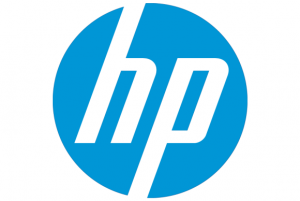
It has been a while since HP managed to make a truly successful business decision. Their significant market presence has been maintained mostly through the momentum of brand recognition and it is pretty difficult to remember the last time any of their tech products has received more than a lukewarm reception. The fading glory of Hewlett-Packard is often laid at the feet of former CEO, and current former presidential candidate, Carly Fiorina but their problems began long before she came along. HP had been losing ground in the personal computer market for several years before she took the top spot, and in an era when the personal computer market was growing that was pretty hard to do. But Fiorina and her frankly disastrous merger with fellow stumbling computer giant Compaq is ultimately what damaged the brand, and it has never really come close to fully recovering since.
Hewlett Packard Enterprise would focus on their servers, networking, consulting and software products and remain under the leadership of Whitman, while HP Inc. led by Dion Weisler would control the printer and computer side of the company. Weisler was already in charge of the 2D printer and computer divisions of HP, but he wasted no time in making sure that everyone knew that 3D printing was going to be a major focus for the new, slimmer company. First by creating a standalone 3D printing division, and then by appointing former senior VP of imaging and printing Steve Nigro to run it. Splitting Hewlett Packard into two companies wasn’t without its detractors, but in general it has been seen as one of the smarter moves the company has made in decades, and it is hard to argue with their new 3D printing strategy.
HP Inc. has not only introduced a new desktop PC called Sprout that integrates an entire 3D ecosystem into it, but they developed their new MultiJet Fusion 3D printer that they hope to make a fixture in the office. The full-color 3D printer will reportedly be the fastest high-quality commercial 3D printer on the market, and is priced considerably cheaper than their competitors. The MultiJet Fusion technology uses a thermal inkjet array and binding agents to produce what they say are more reliable and precise parts. But the technology is untested, and until the first units start to ship in 2016 there really isn’t much to go on in regards to quality other than their word. And for a tech company, HP hasn’t been very good at making great tech for a very long time.
What the new HP Inc. does have going for it, however, is a worldwide distribution and manufacturing network that has few competitors in the PC or 2D printer markets, much less in the significantly smaller 3D printing market. They also have invaluable name recognition, and a newly more narrowly focused business plan. They are wisely skipping the overcrowded hobby/maker market and focusing their 3D printing business entirely on serving businesses and industry. At this point, virtual commercial market dominance is theirs to lose, especially since their only significant competitors Stratasys and 3D Systems have been quietly melting down for the past year and a half. There are other commercial 3D printer manufacturers out there of course, but none of them can compete on a global scale the way HP Inc will be able to. If the MultiJet Fusion technology is good, then there will be little that can stop HP.
But I didn’t just write a brief history of Hewlett-Packard for my health, it’s because it is important to see who they are as a company and what they’re going to be bringing to the 3D printing industry. As a company, HP has been coasting on their brand name for almost twenty years, and it is going to take a little more than a solid but obvious business plan and some flashy new technology to change that. 2016 is going to be a very important year for HP Inc., either because they revolutionized full-color 3D printing, or because they failed spectacularly at revolutionizing full-color 3D printing. I have little doubt that in 2016 HP Inc. will make a lot of waves in the 3D printing industry, but if their technology isn’t up to snuff then those waves are going to be caused by a bellyflop.
